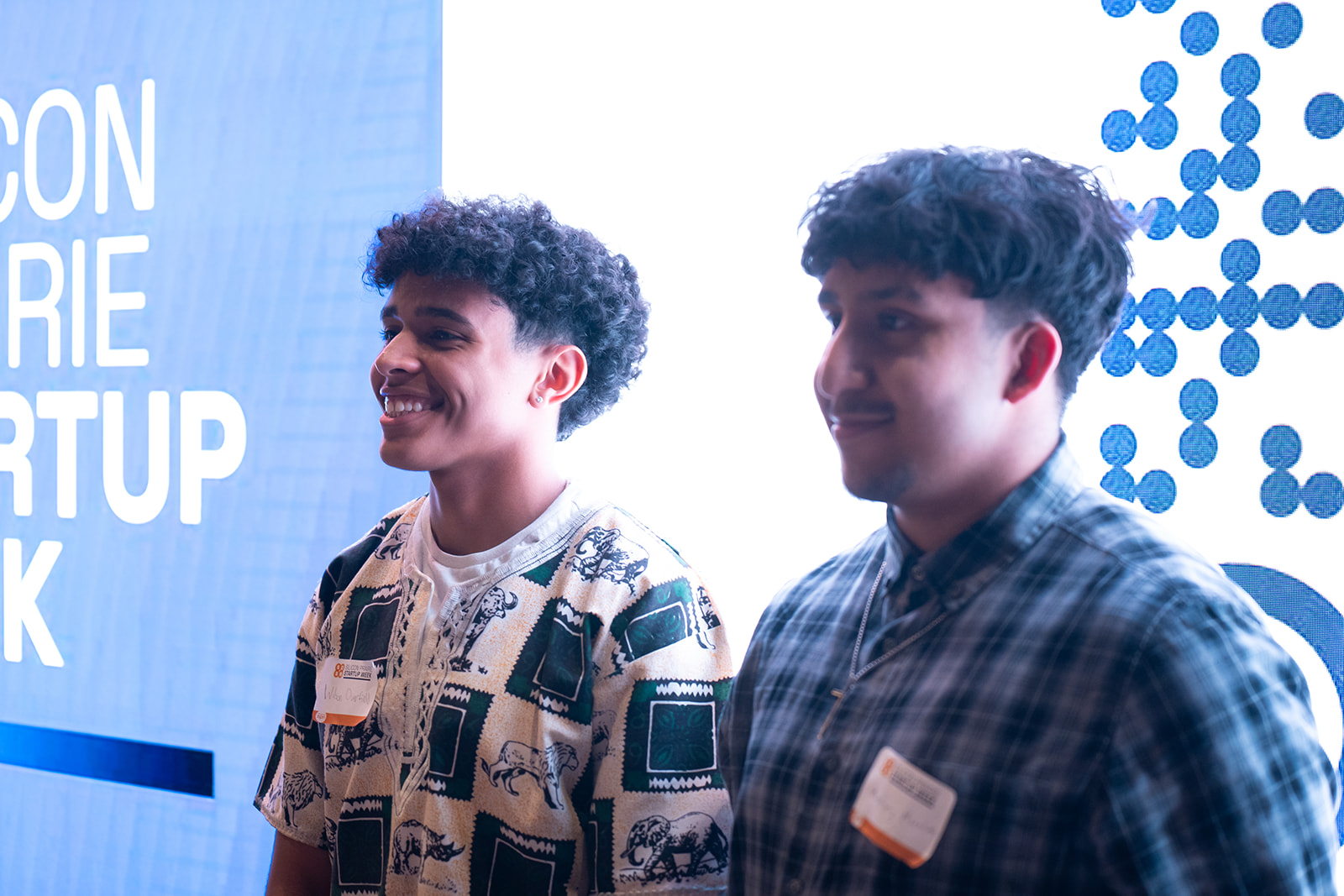This is a sponsored guest post by Mutual of Omaha and does not necessarily reflect the views of Silicon Prairie News.
In 2013, Mutual of Omaha’s Information Services (I/S) operation needed managers.
At the time, it was a difficult position to fill, and leadership-ready candidates were in short supply.
While there were many publicly available development programs, I/S senior leadership was looking beyond what they had to offer.They wanted to leverage Mutual’s internal, corporate leadership educational offerings and add mentoring from I/S leadership as well as opportunities to forge working relationships with their peers across the I/S operation.
Who better to build and shepherd that program than I/S leaders?
“We’re now on the seventh iteration of the I/S Leadership Academy (ISLA),” said Stefanie Shanahan, a senior business systems consultant on the I/S Talent Experience team. She has been involved with the program since its inception.
While the talent team administers ISLA and provides much needed learning and development expertise, I/S leadership has continued to drive the program. “Sponsorship rotates among I/S officers and directors,” continued Shanahan. “Each year, curriculum decisions, timing and logistics are decided by a council of I/S managers and former program graduates.”
“We took a break from the program in 2020 which allowed us to refocus program components and capitalize on a more structured leadership track being offered by our corporate learning area,” Shanahan added.
This move is very much a hallmark of the program over time – it has evolved to include new resources as they become available. “Many program updates come from council recommendations,” Shanahan said. “They keep an eye out and frequently ask, ‘Is there any way we can make this opportunity available to ISLA?’”
“The program is open for any I/S associate to apply. Applicants are required to complete a series of communication and leadership classes. These courses level set prospective participants and gives them a taste of the commitment involved in the program,” said Shanahan. The cohort size has grown from 12 to 16 participants and the program is now run entirely virtually.
In addition to leadership content, participants are given the opportunity to grow their self-awareness through self-assessments and peer assessments. John Glen, who is now Information Services manager of the Data Solutions team, was a systems engineer in 2018 when he attended ISLA. He found the assessments valuable. “I was already aware of my own strengths,” Glen said. “The ‘aha’ moment for me was how my strengths could be viewed by others. If you’re analytical like me, somebody decisive can view that as a weakness. You have to shape your message and communicate in a way that is more concrete.”
Mike Quast, an architect III in I/S Information Security, also derived benefit from this part of the ISLA program. “Being able to recognize how other people operate and respond to feedback is helpful. It made me think, ‘How can I flex to better adapt to a person’s characteristics and the way they operate?’ Just learning to consider that was needed was most beneficial.”
Each participant is paired with a member of management who will be their mentor during and after the program. There is a strong networking component with leadership and peers. “Being paired with a mentor has been helpful with career transitions,” said Quast. “I stepped into a leadership role in a stretch assignment. The mentorship and coaching were very helpful. The networking aspects of the program, particularly with peers, was also good. Working with people across I/S is the nature of what we do in I/S Security. It was good to expand my network and get to know everyone’s style and strengths. We don’t communicate as frequently now, but I still know there are people I can reach out to and I feel comfortable doing that,” Quast added.
Ruth Cronin, who was part of the first ISLA group in 2014 when she served as a project manager, continues to keep in touch with her mentor. She has since moved from I/S manager to director of the I/S Finance and Investments area. “My mentor is a sounding board for ideas and another person from whom to seek advice,” said Cronin. “It’s nice to have the perspective of someone outside your situation. Also, having a mentor instills a big sense of ‘we’ – that all leaders are really peers. I value having the psychological safety to communicate freely.”
The program culminates in a capstone project where small groups formulate business plans that include cost/benefit analysis, time projections and impact assessments. Each group presents their plan to I/S senior leadership. The feedback and questions from senior leaders contribute a more comprehensive understanding of business and work decisions. Until 2021, the implementation of these ideas was turned over to a project sponsor. Scoping the work is now part of the program.
“Now participants propose the projects themselves and they get to see their own work come to fruition,” said Quast. “A lot of effort above and beyond their daily jobs goes into the projects and it’s good to see that work benefit the company.”
“Capstone projects are the perfect storm for teaching leadership,” said Shanahan. “Each group member contributes differently. Everyone is going a different direction and has a different understanding of the goal. It sometimes takes coaching for groups to recognize that if something isn’t going well, the group must fix it. Collaboration can be challenging. There is accountability and ambiguity. It’s difficult not to have clear direction, but participants would learn less if more structure was imposed.” Shanahan has observed that getting leadership experience involves some struggling. “There’s reassurance in getting that first experience in a safe environment like ISLA where you know your struggles won’t damage your career,” Shanahan added.
ISLA was founded to help fill a need for managers. It has since evolved into a place to develop and cultivate a leadership mindset and prepare our associates to take on more complex roles.Although 60% of ISLA participants have moved into formal management positions, the program exists to benefit anyone in I/S who is working in a leadership position, including engineers, architects, project managers – anyone who leads and influences others regardless of whether they have direct reports.When Glen applied to ISLA, he was not considering a move to management.
“Becoming an I/S manager wasn’t my intent,” said Glen, “I was looking to enhance my ability to communicate and lead effectively as a senior engineer. In that position, you’re constantly working with peers on your team as well as other teams across the company. I wanted to gain insights on how to be a better leader and communicator in those situations.”
Quast believes development opportunities are always worth pursuing. “It’s what you do with what you learn that’s important,” Quast said. “I’m not in a formal leadership position with direct reports, but I have the opportunity to use the skills and concepts that we learned in ISLA every day as I coach and mentor others.”
Cronin had management experience before leaving the tech world to raise her children and had run her own small business while they were growing up. “I was working on a development path to management when the program was launched. I applied and was accepted,” said Cronin. “Even though it wasn’t the first time I had been in that type of position, I felt more prepared and connected after participating in ISLA.”
To further prepare participants for leadership roles, ISLA conducts a series of panel discussions called “A Day in the Life.”
“As part of our structural changes for 2022, we’ve expanded these,” said Shanahan. “There will be panel discussions with people in leadership positions across the I/S operation.”
Given the length and breadth of the program, do participants believe it is worth the time and dedication required to attend the I/S Leadership Academy? “Absolutely,” said Glen. “It’s important to provide these experiences to those who are ready and seeking them. The company stands to gain if we can keep the program going and even include more participants.” Glen also believes the experience changed how he approaches his job as an I/S manager.
“I carry forward many of the concepts that help me lead effectively,” Glen added. “They are ingrained in how I work now.”




